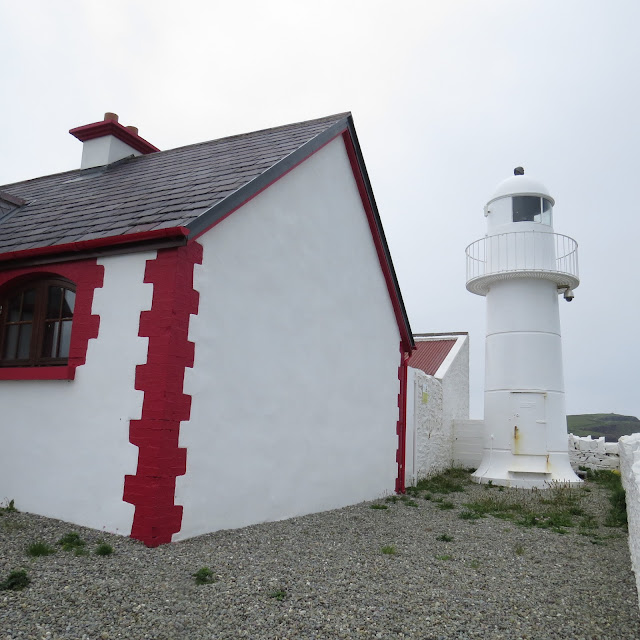Its been quite a while since I bagged what my wife would term a real, Irish lighthouse. The lighthouse at the eastern entrance to Dingle Bay is certainly that, though it is not operated by the Commissioner of Irish Lights. Actually, we got photos of it in two ways - firstly from the water and secondly from the land.
We tried our hand at rowing a naomhog (little saint), similar to a currach, except long and slender. There is a place on Dingle marina where you can try your hand at it. The boats are easily rowed, fly through the water and the day we did it was as calm as sea as you're likely to get. Anyway, we rowed almost to the mouth of the harbour near the lighthouse and I managed to get the first two photographs here.
The second set of photographs from land can be reached by a path all the way from Dingle, if you have the time, or from a quarter of a mile away, if you haven't. A beautiful spot and even Fungi, the dolphin, put in an appearance for us.
The lighthouse and the keepers' cottage were erected in 1885 to provide safe entrance into Dingle harbour. They appear to be in great condition and have benefitted from a relatively recent lick of paint. The tower itself is quite small, only 24 feet high. The whole site is surrounded by a low stone wall

We took the road out of Dingle heading for Annascaul. Passing the Dingle Skellig Hotel on the right hand side, about 1.3 kms further on there is a very small turn to the right, on a right hand bend, that almost doubles back on itself. This will bring you to the shore, where there's parking for about 5 cars. From there it is but a 10 minute walk past Hussey's Folly to the lighthouse. Alternatively, if you miss this turn, take the next right turn a few hundred yards further on. This will also bring you to the coast but you'll approach the lighthouse from the opposite direction.



















